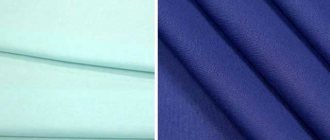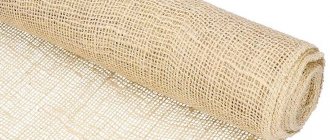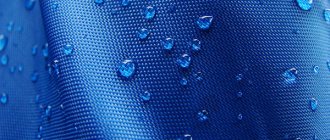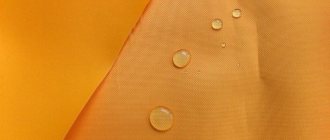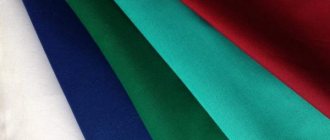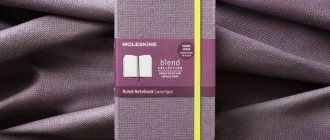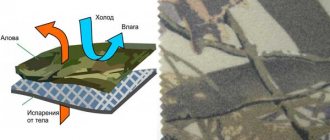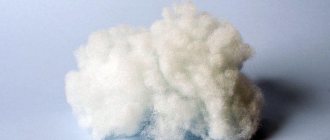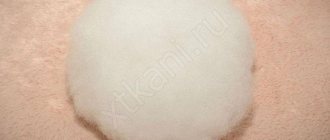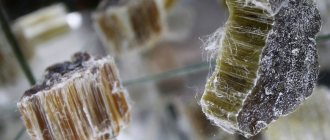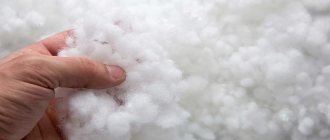Production
It is made from polyacrylonitrile, a product obtained by the polymerization of acrylonitrile in the presence of catalysts.
1. Polyacrylonitrile resin is dissolved in dimethylformamide (a special solvent) when heated. A fiber is formed from the resulting solution.
There are two molding methods:
- dry. The solution passes through the dies of a special spinning machine, at the exit the streams are blown with air (temperature 200 ° C) and harden. In this way, only continuous threads of nitron can be obtained, which in appearance resemble silk;
- wet. After filtration, the resin solution is placed in a tank where air bubbles are removed from it. After this, using pumps, it is fed to the dies and pressed through the holes into a judgment bath with an aqueous solution of dimethylformamide (10-15 ° C). Hardened threads turn out translucent and very fragile. They are then stretched in an aqueous solution to impart strength. Using the wet method, you can obtain both threads and staple fiber, curled in a crimping machine and cut into pieces of a certain (specified) length. It is subsequently processed into yarn. Nitron staple looks almost no different from wool.
2. After the stage of spinning and thermal consolidation with steam, it is necessary to remove the remaining solvent from the fiber, for which it is washed.
3. Then comes the oiling process so that no electrostatic charges arise during further processing.
Read about: rubberized fabric: durable and practical.
Since the fiber has low hygroscopicity and swells slightly in water, it is difficult to dye. It can be dyed in light colors at a temperature of 100 °C using conventional methods using dispersed, vat and basic dyes. Dark and bright colors are dyed at higher temperatures (120 ° C) or auxiliary substances are added to the bath.
Application, advantages and disadvantages
Such fabrics do not deform, retain their shape well, are resistant to ionizing radiation, and are not damaged by moths.
It is not advisable to use nitron fabrics for sewing clothes that are in direct contact with the body: the material does not absorb moisture, so natural heat exchange will be disrupted, and diaper rash may appear on the skin.
In order to reduce the cost of raw materials and impart dimensional stability to fabrics, nitron is added to cotton, mohair, wool, and angora. Considering that such materials practically do not shrink, are resistant to ultraviolet rays and retain their shape well, they are used for the manufacture of:
- blankets;
- curtain;
- sofa cushions;
- blankets
Fabrics containing nitron are 4 times stronger than those containing artificial silk. The fiber is used in the production of pleated curtains, which reliably protect the room from light. Nitron has a high ability to preserve pleating (in wool it is 5 times lower, in viscose threads it is 20 times lower).
The cost of nitron is low, so it is used in the production of high-volume yarn. Subsequently, knitted products are made from such threads. Faux fur and various rugs also contain nitron.
Perhaps one of the disadvantages of fiber is its limited color range due to the fact that it cannot be dyed with all dyes.
Nitron fiber has many positive qualities:
- does not lose color or deteriorate under the influence of ultraviolet radiation;
- withstands high temperatures;
- soft and pleasant to the touch;
- retains its shape well;
- has high thermal insulation properties;
- dries quickly;
- withstands exposure to acetone, gasoline, alkalis and medium concentration acids.
However, it has some disadvantages (which, however, are observed in most synthetic fibers):
- unable to absorb moisture;
- does not allow air to pass through;
- during operation, pellets are formed;
- easily electrified;
- absorbs fats, resulting in stains that are difficult to remove.
Fabrics and knitwear containing nitron are undemanding to care. They can easily withstand washing with strong detergents and do not require ironing (the fabric does not wrinkle easily). It is recommended to wash at a water temperature of no more than 30°; drying in a washing machine is not advisable.
The products should not be twisted; it is better to dry them flat on a horizontal surface. You can dry clean them, but under the influence of phenol and formaldehyde the item may become unusable (the fibers are destroyed).
Nitron is easy to clean from dirt and does not wrinkle. However, it has low abrasion resistance (in this indicator it is even comparable to cotton).
Save
Save
Save
Save
Save
Properties of Nitron fiber
- strength. Compare with cotton, inferior to polyamide and polyester fiber. When wet, strength is not lost;
- low thermal conductivity. It is the “warmest” synthetic fiber in the world;
- good stretchability;
- high elasticity;
- low hygroscopicity (less than 2%);
- resistance to water. Has a low degree of shrinkage and swelling;
- medium degree of creasing;
- light fastness. Does not deteriorate and does not fade in the sun. In this parameter it surpasses all textile fibers;
- heat resistance. The melting point is 250 °C, the decomposition temperature is 350 °C. There is the concept of “black nitron”: the fiber is heated at a temperature of 200 ° C for 60 hours, turns black and becomes highly resistant to high temperatures - it does not decompose even at 600-800 ° C, while maintaining sufficiently high strength and elasticity;
- abrasion resistance is lower than that of nylon and lavsan;
- resistance to chemicals, including low concentration acids and alkalis. When exposed to concentrated alkali at low temperatures (room), the fiber does not deteriorate; at high temperatures, it begins to decompose;
- resistance to organic solvents;
- resistance to rotting, mold, moths.
How is nitron obtained?
The main component of nitron fibers, which are similar in their properties to acrylic, is polyacronitrile or its copolymers . It is obtained from a polymer solution by dry or wet molding and is produced in the form of staple, or less often filament, threads. The properties of the material depend on the structure of the thread. The most common staple-based nitron fabric is close in appearance to wool, and fabric made from filament threads is silky and smooth. Regardless of the texture, nitron has the following characteristics:
- strength;
- good warming properties;
- resistance to high temperature and UV radiation;
- resistance to such active chemicals as acids and alkalis of medium concentration, acetone, gasoline, carbon tetrachloride;
- crease resistance;
- no shrinkage or stretching;
- softness;
- ease of washing;
- resistance to microorganisms and insects;
- low price.
As for the disadvantages of nitron, these include high electrification and almost complete absence of moisture absorption, as well as the fact that coloring of these fibers is possible only with the help of special substances. In addition, pellets form on it over time, and fatty contaminants have the ability to penetrate deeply into the fibers and are difficult to remove. With its good chemical resistance, this polymer dissolves upon contact with phenol, formaldehyde and other substances, which, however, are rarely used in domestic conditions. Currently, these fibers are usually used as an additive to other materials, most often knitwear. In this case, the properties of the fabric depend on the basic composition of the raw material and the weaving method.
Application
The scope of application of polyacrylonitrile fiber is very extensive.
Cloth
It is used alone and in combination with other fibers in blended fabrics.
- In its pure form, it produces high-volume yarn, which makes very warm sweaters that resemble angora in appearance.
- A mixture of nitron and wool is used to make fabrics for the production of coats, suits and outerwear.
- Linen is not produced from this material due to its low hygroscopicity.
- Due to its low abrasion resistance, it is also not used to produce hosiery.
Workwear
Read about: chiffon-jacquard fabric: how airiness and durability are combined.
High thermal insulation properties make it possible to use nitron for the production of heat-protective fabrics used for sewing warm jackets and coats as part of the uniform of workers whose work is associated with low temperature conditions. It is also used to make elements of protective equipment - gloves, capes, suits that prevent contact of chemicals with the skin.
Artificial fur
Faux fur pile is made from polyacrylonitrile fiber. It retains heat well and has an excellent appearance. It is used for the production of outerwear, linings for clothes and shoes, toys, furniture upholstery, workwear, etc.
Home textiles
- Bed linen and decorative items are produced from blended fabric, which includes cotton or viscose and nitron. Carpets, blankets, and various bedspreads are also made from fiber.
- The high degree of light resistance allows the use of nitron for the production of durable curtains and curtains with excellent external qualities. Nitron pleated curtains, reminiscent of blinds, retain their original appearance for a long time, since the ability of the fabric to hold pleating is very high.
- Due to its hydrophobicity, it is used to make curtains for bathrooms that protect the space from splashes.
Furniture
Heat-treated nitron fabric is used to produce lightweight and durable furniture upholstery, which has water-repellent properties (since the fibers fuse when heated) and is easy to clean. When applied with a special Teflon coating, it is also resistant to local heating - hot objects, cigarettes, sparks from the fireplace.
Technical fabrics
Light fastness, strength, relative rigidity and low hygroscopicity allow the use of nitron fiber fabric in the open sun and rain. It is used to produce awnings, covers, awnings, advertising signs and banners.
Nitron fiber: properties, application, care recommendations
The range of fabrics is becoming wider every day. Some names are constantly heard, but there are also those that users encounter less often, for example, acrylic. What kind of fabric is hidden under this beautiful name, a detailed description will help you find out. In addition to the main name, the material is also called differently: PAN fiber, Orlon, Prelana, Nitron.
Main characteristics
Despite the fact that acrylic fabric is of synthetic origin, it is lightweight and amazingly soft. The fiber was discovered by the American company DuPont in the 40s. The company set a goal for itself - to develop a new type of fabric, and in 1948 this was achieved. The first sample with the name Orlon was a worthy competitor to nylon.
The only downside was that the material didn't paint well. The company continued its development, and in 1952 the world saw the long-awaited specimen, not inferior in quality to Orlon and at the same time ideal for painting. It was called acrylic.
Features of fabric composition
Acrylic fibers may be present in the fabric, both in their main form and in combination with other materials. This combination allows things made from acrylic to retain their original characteristics for a long time.
Acrylic fibers can also be used to create other fabrics. They are present in cotton, angora, mohair, wool and coat material. However, in some types of materials the content of this fiber can be only 5%.
Fiber production
Acrylic is made from natural gas. It is this element that is the very material from which hydrocyanic acid and acetylene are created, which are required for production. The process of creating acrylic is a chemical reaction of a high level of complexity.
We also recommend reading:
Dry felting from acrylicBale and AristotleHow to use acrylic paint
Like other fibers of synthetic origin, acrylic is produced in the form of a continuous thread. At the next stage, a perfectly smooth material with a clear weave pattern is obtained from it.
To make the texture more unique, a single canvas is divided into small sections of the same scale. They are called staples. The fabric obtained from staple yarn is similar in appearance to wool, which is why acrylic is nicknamed “artificial wool”.
Care
Products made from such fiber do not require complex care:
- washing is possible with any detergents;
- stains can be washed off well with plain soapy water;
- It is not necessary to iron such products, as they wrinkle a little;
- can be cleaned with gasoline and acetone.
The production and use of polyacrylonitrile fiber is increasing due to its valuable properties and low cost. It is the best substitute for natural wool and surpasses it in many respects.
© 2021 textiletrend.ru
Classification
Among the existing nerve cells, experts traditionally distinguish the following units, according to the number of processes and functional purpose:
Based on the number of endings:
- unipolar - with a single process;
- pseudounipolar - from two branches of the same dendrite;
- bipolar – there is 1 dendrite and 1 axon;
- multipolar - several dendrites, but 1 axon.
By functional responsibilities:
- perceivers - for receiving and transmitting signals from the outside, as well as from internal tissues;
- contact – intermediate, which provide processing and transmission of information to motor neurons;
- motor - generate control signals and then transmit them to other organs.
Additional units of the peripheral nerve regulatory system are lemmocytes. They envelop the processes of neurons and form the unmyelinated/myelin sheath. They are also called Schwann cells in honor of their discoverer. It is the Schwann cell membrane that, as the axon encircles and the membrane forms, helps to improve the conductivity of the nerve impulse.
Experts must identify special contacts of neurons in the brain tissue, their synapses, the classification of which depends on the form of signal transmission:
- electrical – are important in the embryonic period of human development for the process of interneuron interactions;
- chemical - widely represented in adults; they use mediators to transmit a nerve impulse, for example, in motor cells for unidirectional excitation along the fiber.
Such a classification gives a complete picture of the complex structure of the brain tissue of humans, as representatives of a subclass of mammals.
TRIKOTAZHA.NET
Production of nitron fiber. The raw material for the production of this fiber is acrylonitrile, synthesized from propylene and ammonia or acetylene and hydrocyanic acid (the first method is more economical).
Acrylonitrile is polymerized into polyacrylonitrile resin with a molecular weight of 40,000-60,000. The resulting resin is dissolved when heated in a special solvent - dimethylformamide - and a spinning solution is obtained, from which nitron fiber is spun. Spinning fiber from solution can be done dry or wet. Only filament threads are produced using the dry method. The wet method can produce both filament yarns and staple fibers. Nitron staple fiber is mainly produced.
Fiber spinning is carried out by forcing the spinning solution through the holes of the spinnerets. The number of holes in the die when spinning staple fiber is from 3000 to 12000. The spinning speed is 3-6 m/sec.
The streams emerging from the spinneret enter a precipitation bath with an aqueous solution of dimethylformamide. In this case, the solvent from the spinning solution streams passes into an aqueous solution, and the streams solidify, turning into threads.
Freshly formed fiber is always fragile, therefore, to give it plasticity, after preheating it is stretched by 400-1200% at a temperature of 100-150 ° C. In this case, macromolecules are oriented along the axis of the fiber, intermolecular bonds increase, the fiber becomes strong and elastic.
The fiber is then heat set to increase its heat resistance and reduce shrinkage.
Next, the bundles are corrugated and cut into pieces of a certain length (from 35 to 150 mm).
In appearance, nitron staple fiber is difficult to distinguish from high-quality wool, and filament threads resemble natural silk. The surface of the threads is smooth, with a dumbbell-shaped cross-section.
Properties of nitron fibers. Nitron fibers are characterized by low hygroscopicity, which limits the use of these fibers for linen products, good resistance to water (they do not swell or shrink in water); high heat and light resistance, low thermal conductivity.
In terms of heat resistance, nitron surpasses all carbon-chain fibers and is not inferior to lavsan. If the fiber is heated at a temperature of 200° C for at least 60 hours, it turns black and acquires particularly high heat resistance. This fiber, called “black nitron,” can withstand heating up to 600–800°C without breaking down and maintaining a certain strength and elasticity, which is very important for the manufacture of special clothing.
In terms of light resistance, nitron is superior to all currently known fibers, with the exception of fluorolone. If nitron is exposed to light weather for a year, its strength will decrease by 20%. while the strength of cotton will decrease by 95%.
The chemical resistance of nitron is not high enough. Thus, when exposed to a 5-20% solution of sodium hydroxide for more than 8 hours, the fiber is completely destroyed. Under the action of concentrated solutions of alkalis and sulfuric acid, saponification of nitrile groups occurs, accompanied by the destruction of macromolecules. Nitron is resistant to the action of medium and weak solutions of alkalis and acids, as well as most organic solvents.
Nitron is resistant to the destructive effects of mold and microorganisms and is not damaged by moths. Nitron also has particularly high resistance to nuclear radiation (twice the resistance of polyamide fibers and four times the resistance of viscose fibers).
The strength of nitron fibers is good, about the same as cotton, but lower than polyamide and polyester fibers. When the fiber gets wet, its strength is almost completely retained. The fiber's elongation is good and its elasticity is high. Products made from nitron retain their shape well after washing and do not require ironing. In terms of stability of pleating, nitron and lavsan are in first place. If their ability to maintain pleated folds in products is taken as 100%. The pleating resistance of products made from wool will be 25%, from acetate silk - 20%, from viscose silk - 5%.
In terms of abrasion resistance, nitron is significantly inferior to polyamide, polyester and other carbon chain fibers, as well as artificial silk and cotton. Therefore, nitron is not used for hosiery.
Nitron fiber, unlike polyamide and polyester fibers, burns more intensely, in flashes, releasing a large amount of black soot. After the combustion stops, a dark, irregularly shaped influx remains, easily crushed by fingers.
The cost of this fiber is significantly lower than the cost of polyamide and polyester fibers.
Nitron fiber is used in its pure form for the production of high-volume yarn, from which wool-like fabrics (for dresses, skirts and suits) and knitted products (sweaters, jackets, scarves, etc.) are produced, reminiscent of products made from Angora wool.
Nitron is widely used in a mixture with wool for the manufacture of suit and coat fabrics and outerwear. In addition, nitron is used for the manufacture of workwear, artificial fur, carpets, blankets, tarpaulins, curtains and technical products.
Source: “Technology of fabric knitting production” L.S. Smirnov, Yu.I. Maslennikov, V.Yu. Yavorsky
Published: 2008-12-23 15:57:07

